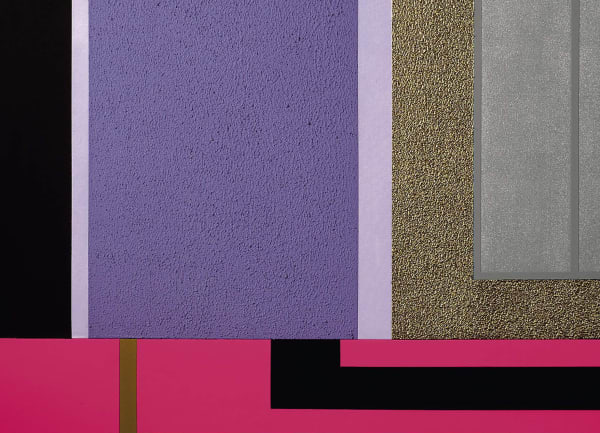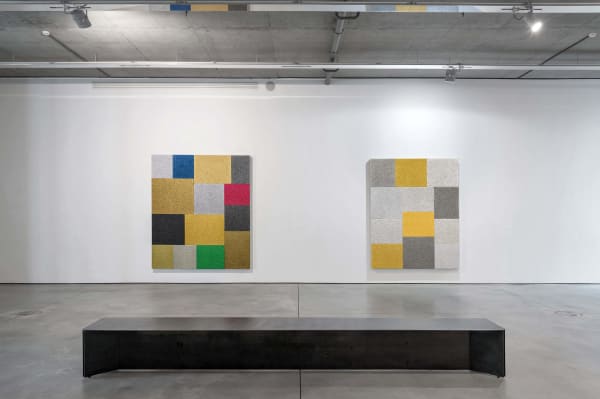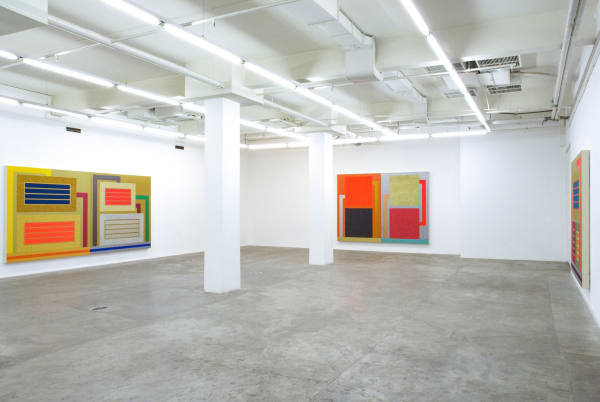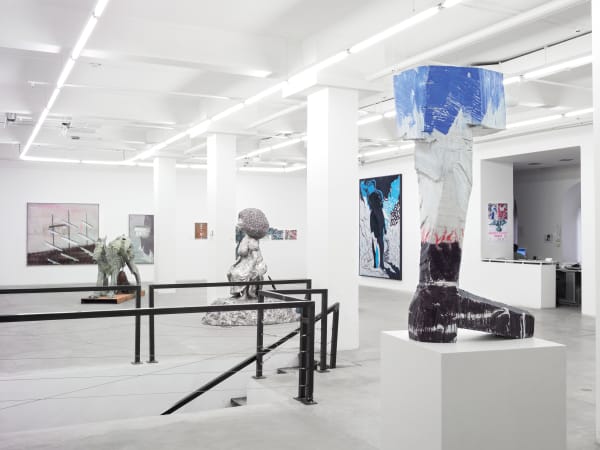Peter Halley: Personal Exhibition
-

“For me, this is an ideal period for an artist to be involved in issues of color. Technology is offering up increasingly spectacular coloristic effects in film, television, and on the computer screen. New intensely colored materials are entering architecture and industrial design. Advertising has transformed every corner of our environment into garish but enticing coloristic vignettes. The coloristic intensity of our built environment leaves me bewildered that color has not become a central theme in the work of other artists.”
— Peter Halley -
Peter Halley
DOWNLOAD PRESS RELEASE
CONTACT
 Email
Email
 Moscow
MoscowEmerging in New York in the 1980s, Peter Halley brought a radical new energy to geometric abstraction. Against the backdrop of postmodern eclecticism and rapid digital transformation, he reimagined geometry not as a neutral visual language, but as a powerful tool for reflecting the psychological and structural conditions of contemporary life.
Halley’s vivid, high-contrast paintings map the infrastructure of the modern urban world: blocks, cells, towers—spaces of control, repetition, and solitude—interconnected by thin conduits resembling communication lines or pipelines. His bold use of synthetic color and industrial materials captures the artificiality and intensity of our media-saturated surroundings, forging a visual language that bridges painting, architecture, and mass culture. These elements evoke maps or diagrams depicting a structured but fragmented reality — a world where communication takes the place of genuine interaction, and the sense of separation becomes a constant presence in daily life.
-
Exhibited Works
-
“I was newly back in New York and feeling quite psychologically isolated, and began to think of things coming in and out of these enclosed spaces—like the telephone lines, electric lines, plumbing. I shortly thereafter added a second canvas, with the idea that these were underground conduits feeding these spaces. So it wasn’t just a cityscape—it was a diagram of contemporary life as it’s organized. I thought of these early works as cable TV, but it semed to anticipate what was about to happen with the internet.”
Halley’s practice became foundational to the Neo-Geo movement, or Neoconceptualism, which emerged in response to the growing influence of digital culture, networks, and systems thinking. Through a vocabulary of stylized forms, diagrammatic structures, and synthetic surfaces, his work continues to investigate themes of control, separation, and mediated communication—within a reality where architecture and information increasingly define the contours of human experience.
Selected Collections:
Museum of Modern Art (MoMA), New York, NY, USA
Solomon R. Guggenheim Museum, New York, NY, USA
Museum of Fine Arts, Boston, MA, USA
Whitney Museum of American Art, New York, NY, USA
San Francisco Museum of Modern Art (SFMOMA), San Francisco, CA, USA
FNAC Collection, Paris, France
Museum of Modern Kunst, Vienna, Austria
Krefelder Kunstmuseen, Krefeld, Germany
Addison Gallery of American Art, Andover, MA, USA
Eli Broad Foundation, Santa Monica, CA, USA
Castello di Rivoli Museo d’Arte Contemporanea, Rivoli, Italy
Carnegie Museum of Art, Pittsburgh, PA, USA
Museum of Contemporary Art, Tokyo, Japan -
-
Artist
-
-
Viewing Rooms
-
-
Explore more













